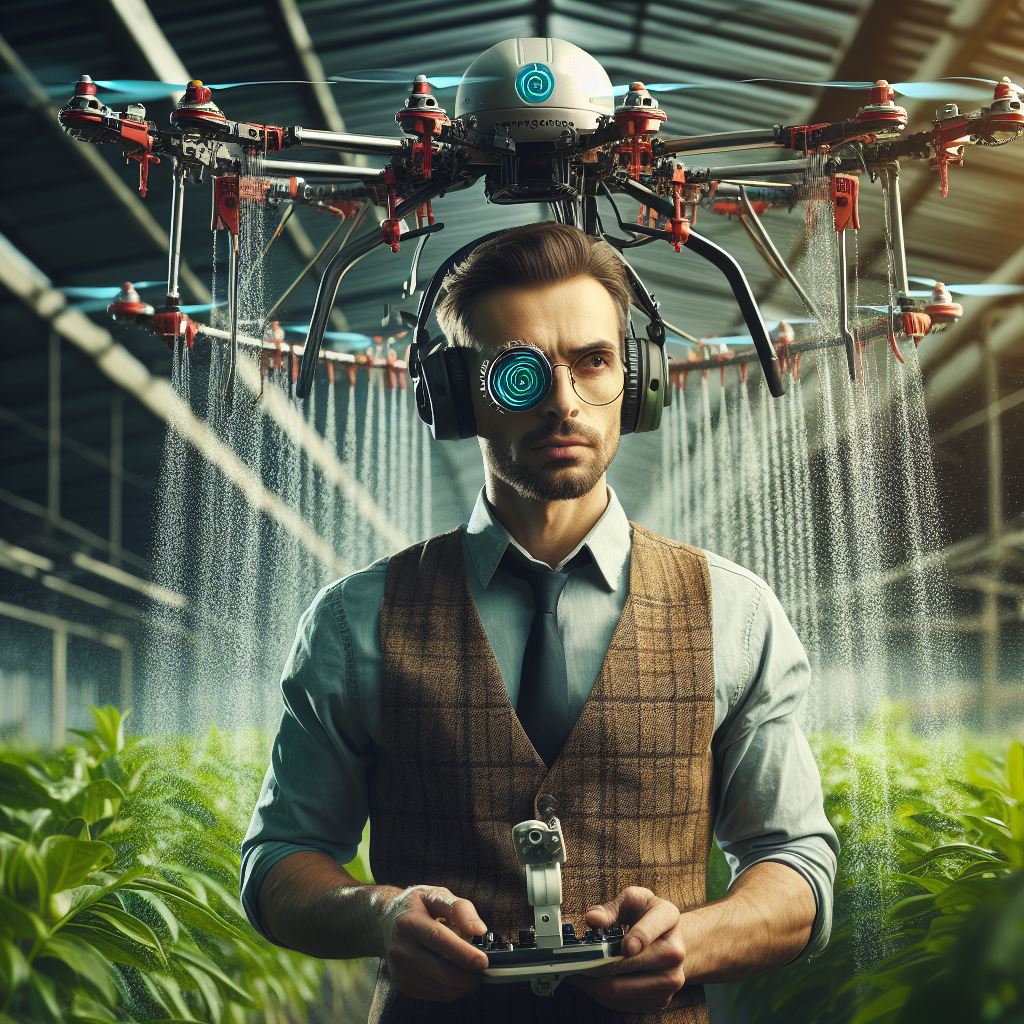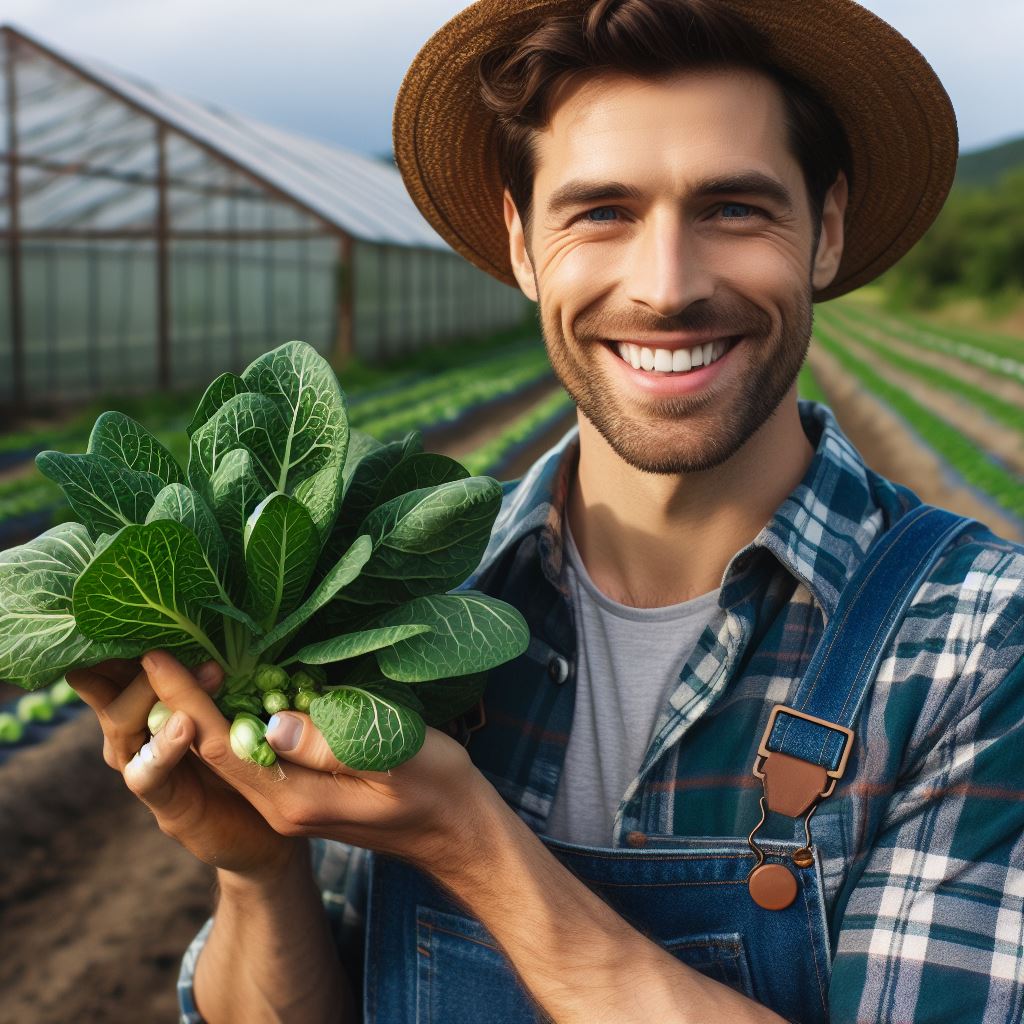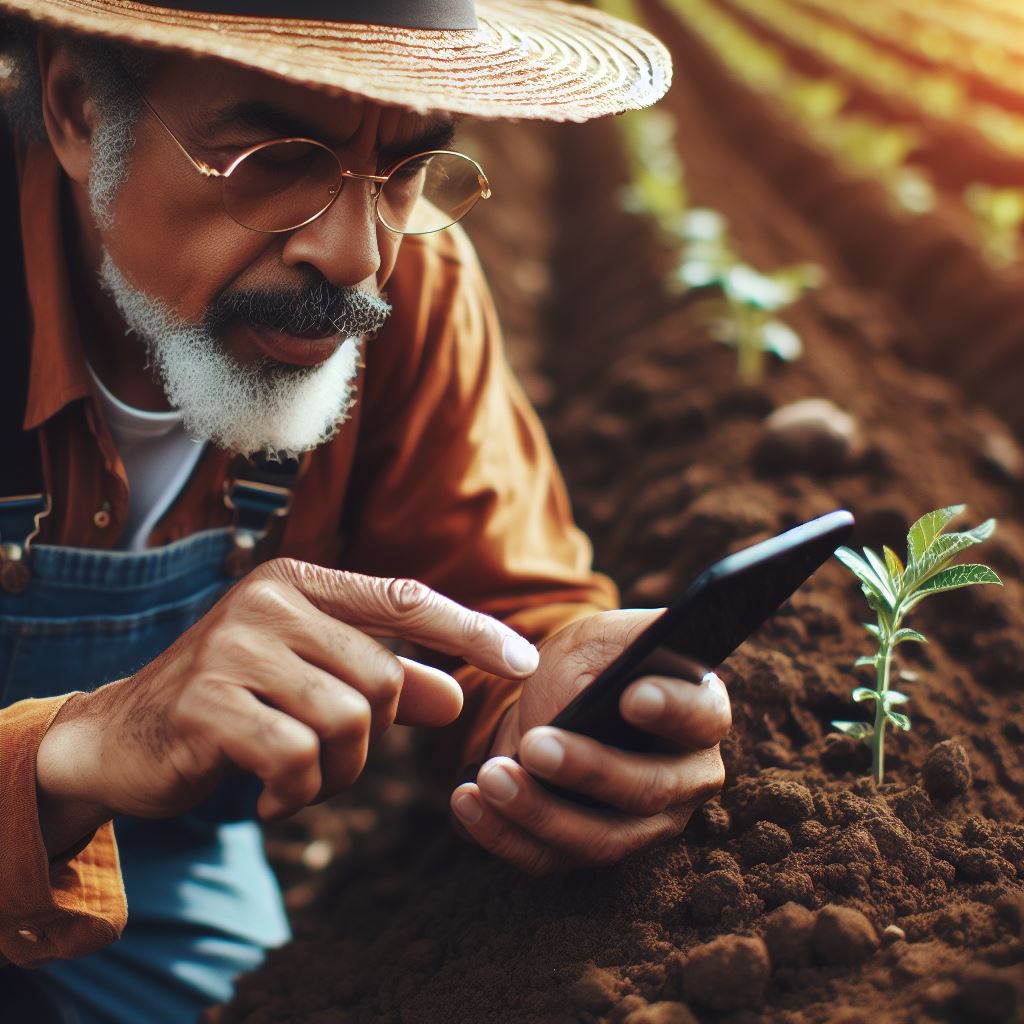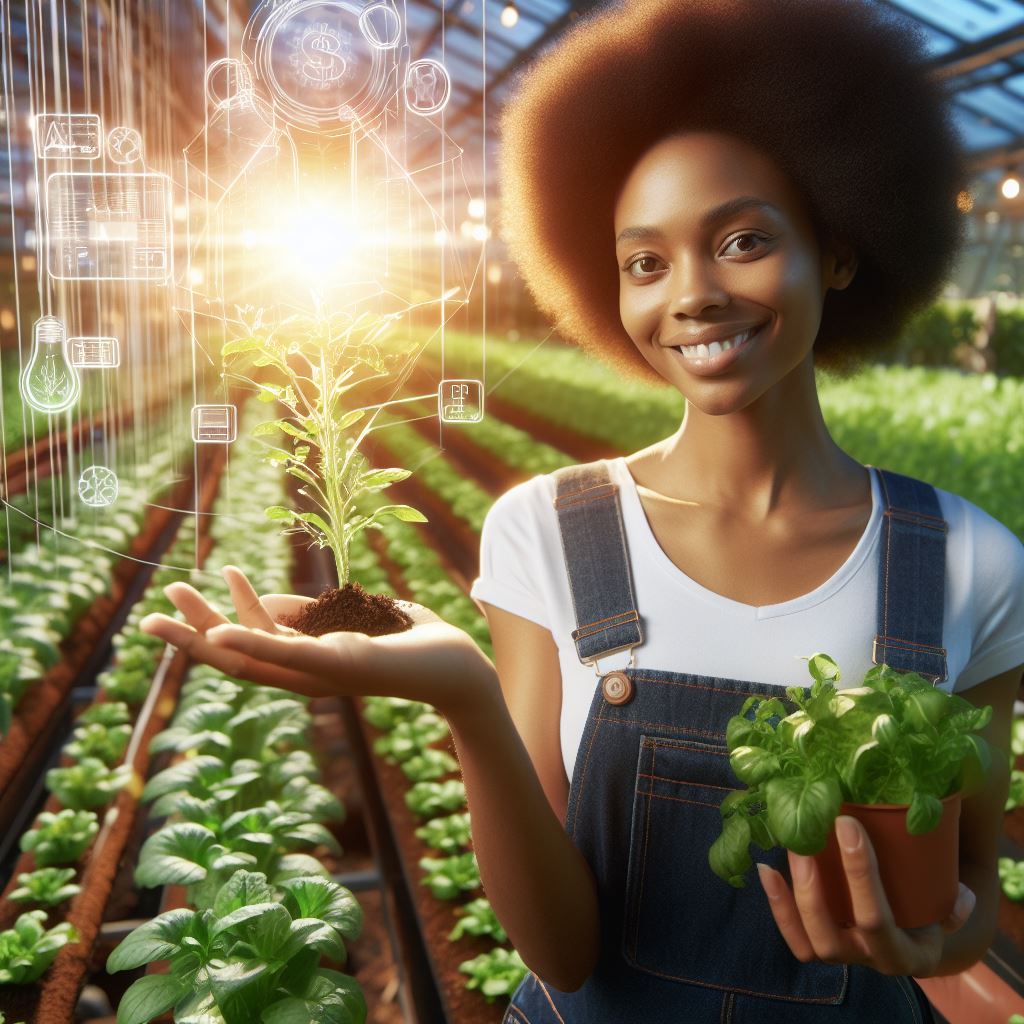Introduction
The use of drones in agriculture
Drones are revolutionizing agriculture by providing efficient irrigation solutions, ultimately transforming the game for farmers.
These aerial devices have been embraced by the agricultural industry for various purposes, including precision agriculture and crop monitoring.
The use of drones in agriculture has proven highly beneficial.
Equipped with sensors and cameras, these autonomous machines provide real-time data on soil condition, crop health, and water requirements.
Farmers can analyze this data to make informed decisions regarding irrigation strategies, optimizing water usage and crop yield.
Importance of irrigation in agriculture
Irrigation plays a significant role in agriculture, as it involves supplying water to crops at the right time and in the right amount.
Proper irrigation ensures optimal growth, development, and productivity of crops.
Insufficient or excessive water supply can result in crop failure, affecting food production and farmer income.
With drones, farmers can closely monitor the water needs of their crops, allowing for precise irrigation management.
By identifying areas of the field that require irrigation and precisely applying water, drones minimize wastage and improve water efficiency.
This leads to better resource management and reduced environmental impact.
Moreover, drones reduce the labor and time required for irrigation.
Traditionally, farmers would have to manually inspect their fields, which was both time-consuming and physically demanding.
Drones automate this process, allowing farmers to cover large areas quickly and effortlessly.
This saves valuable time and resources, enabling farmers to focus on other essential agricultural tasks.
Transform Your Agribusiness
Unlock your farm's potential with expert advice tailored to your needs. Get actionable steps that drive real results.
Get StartedBasically, drones are transforming the agriculture industry by providing efficient irrigation solutions.
These unmanned aerial devices enable precise monitoring of crops’ water requirements, improving water efficiency and optimizing crop yield.
The integration of drones in agriculture is revolutionizing irrigation practices, benefiting both farmers and the environment.
The traditional methods of irrigation
Traditional methods of irrigation have been used for centuries to ensure crops receive the necessary water for growth.
These methods typically involve manually watering the crops using buckets, cans, or hoses.
Conventional irrigation techniques
Conventional irrigation techniques include flood irrigation, furrow irrigation, sprinkler irrigation, and drip irrigation.
Flood irrigation involves flooding the field with water and allowing it to infiltrate the soil.
Furrow irrigation involves creating small channels, or furrows, between crop rows and filling them with water.
Sprinkler irrigation uses sprinkler systems to distribute water over the crops, mimicking rainfall.
Drip irrigation is a method where water slowly drips to the roots of the plants through a network of pipes.
Limitations and challenges associated with traditional methods
Despite their long-standing use, traditional methods of irrigation have limitations and challenges.
Inefficient water usage
One limitation is that these methods often result in inefficient water usage.
With flood and furrow irrigation, a significant amount of water can be lost to evaporation and runoff.
Sprinkler systems can be more efficient, but wind can cause water to drift away from the intended target.
Drip irrigation is highly efficient, but the initial setup can be costly and requires frequent maintenance.
Difficulty of accurately measuring and controlling water distribution
Another challenge is the difficulty of accurately measuring and controlling water distribution.
With conventional methods, it can be challenging to ensure equal water distribution across the field.
Inadequate water distribution can lead to over-watering in some areas and under-watering in others.
This can result in uneven crop growth and reduced crop yields.
Requires manual labor
Traditional methods of irrigation also require manual labor, which can be time-consuming and physically demanding.
Farmers need to monitor and adjust the irrigation systems regularly to maintain optimal water levels.
Drones as a potential game-changer in agricultural irrigation
However, advancements in technology have introduced drones as a potential game-changer in agricultural irrigation.
Drones equipped with specialized sensors and cameras can provide valuable data on soil moisture levels and crop health.
These drones can fly over fields and collect information in a fraction of the time it would take manually.
Showcase Your Farming Business
Publish your professional farming services profile on our blog for a one-time fee of $200 and reach a dedicated audience of farmers and agribusiness owners.
Publish Your ProfileThe collected data can then be used to optimize water usage and reduce water wastage.
Additionally, drones can be equipped with precision irrigation systems to deliver water directly to specific crop areas.
This targeted approach ensures that each plant receives the right amount of water, minimizing water usage.
With drones, farmers can remotely monitor and control their irrigation systems, saving time and labor.
Furthermore, drones can assist in early pest and disease detection, allowing farmers to take preventive actions.
Traditional methods of irrigation have served agriculture for centuries, but they have limitations and challenges.
Drones offer a promising solution by providing efficient data collection, precision irrigation, and remote system control.
Integrating drones into agriculture has the potential to revolutionize irrigation practices and improve crop productivity.
Read: Solar-Powered Irrigation: A Deep Dive
Introduction to drones in agriculture
How drones are revolutionizing farming practices
Drones, also known as unmanned aerial vehicles (UAVs), have become a game changer in the field of agriculture.
With their ability to capture aerial imagery and perform various tasks, these technological marvels have revolutionized farming practices in a revolutionary way.
From monitoring crop health to precision spraying, drones have a wide range of applications in agriculture.
Overview of the different applications of drones in agriculture
Ability to survey large areas of land quickly and efficiently
One of the key benefits of using drones in agriculture is their ability to survey large areas of land quickly and efficiently.
Equipped with advanced imaging technology, drones can capture high-resolution aerial photographs and create detailed maps of fields.
This enables farmers to identify potential issues such as crop stress, disease outbreaks, or pest infestations, allowing for targeted interventions.
Collect data on soil moisture levels, temperature, and nutrient content
Moreover, drones are equipped with sensors that can collect data on soil moisture levels, temperature, and nutrient content.
This information can be used to optimize irrigation strategies, ensuring that crops receive the right amount of water at the right time.
By reducing water wastage and optimizing irrigation, drones play a crucial role in water conservation efforts in agriculture.
Crop spraying
Another area where drones have made a significant impact is crop spraying.
Traditionally, farmers used ground-based machinery for spraying pesticides and fertilizers, which was time-consuming and often resulted in uneven distribution.
Drones equipped with spraying systems are now capable of precise and targeted spraying, reducing chemical usage and minimizing environmental impact.
Precision agriculture
Drones also contribute to the development of precision agriculture, where farming practices are tailored to suit specific crop needs.
By using sensors and cameras, drones can gather data on plant health, growth patterns, and environmental conditions.
This data can then be analyzed to make informed decisions about crop management, such as adjusting fertilizer application or identifying areas with poor drainage.
Livestock management
Additionally, drones are an invaluable tool for livestock management.
They can monitor livestock herds, track their movement patterns, and identify sick or injured animals.
Drones equipped with thermal cameras can even detect heat signatures, allowing for the early identification of health issues in animals.
All in all, drones have brought about a revolution in agriculture, offering numerous applications that enhance overall farming practices.
From crop monitoring and precision spraying to soil analysis and livestock management, these aerial wonders have proven to be a valuable asset to farmers worldwide.
With their ability to gather data quickly and efficiently, drones are transforming the way we approach farming, leading to increased efficiency, reduced environmental impact, and improved crop yields.
As technology continues to advance, the potential of drones in agriculture is only set to grow, promising a bright future for the farming industry.
Read: Agri Robots: The Future of Farming Now
Drones in irrigation
Drones, also known as unmanned aerial vehicles (UAVs), have revolutionized various industries, and agriculture is no exception.
In recent years, these flying machines have emerged as a game changer for irrigation practices, offering farmers a new and efficient way to manage their water resources.
Let’s explore how drones can be used for irrigation purposes and the numerous benefits they bring to the table.
Precision Farming
Drones equipped with advanced imaging sensors and cameras can collect valuable data about crop health and water needs.
This information helps farmers identify areas that require irrigation, ensuring water is distributed precisely where and when it is needed.
Aerial Surveillance
Unlike traditional methods, drones provide a bird’s-eye view of the entire field, capturing detailed images and videos.
This helps farmers detect irrigation system inefficiencies, such as leaks or clogged pipes, allowing for quick maintenance and water conservation.
Water Management
Efficient water management is crucial for sustainable agriculture.
Showcase Your Farming Business
Publish your professional farming services profile on our blog for a one-time fee of $200 and reach a dedicated audience of farmers and agribusiness owners.
Publish Your ProfileDrones assist in monitoring soil moisture levels, evaporation rates, and overall water usage, enabling farmers to optimize irrigation schedules and reduce water wastage.
Irrigation Planning
By generating high-resolution maps and 3D models of the fields, drones assist in irrigation planning.
They help farmers identify topographical variations and areas with poor drainage, allowing for strategic irrigation layouts.
Time and Cost Savings
Drones significantly reduce the time and labor required for irrigation management.
With their autonomous flight capabilities, they can cover large areas in a fraction of the time compared to manual inspections.
Consequently, farmers can reallocate their resources efficiently, leading to cost savings.
Crop Health Monitoring
With the help of multispectral or thermal imaging cameras, drones can assess crop health indicators such as chlorophyll levels, temperature variations, and pest infestations.
This early detection facilitates timely interventions, preventing potential crop losses.
Enhanced Efficiency
Drones equipped with artificial intelligence algorithms can analyze data on-the-go and make real-time decisions.
They can adjust irrigation settings based on weather conditions, crop growth patterns, and predictive analytics, ensuring optimal water usage.
Environmental Conservation
Effective irrigation practices are crucial for conserving water resources and minimizing soil degradation.
By utilizing drones, farmers can improve water-use efficiency, reducing the environmental impact of irrigation activities.
Accessibility
Drones offer a practical solution for monitoring irrigation systems in remote and inaccessible areas.
Farmers can quickly assess the status of their fields without physically accessing difficult terrains, saving time and effort.
Scalability
Whether it’s a small-scale farm or a vast agricultural estate, drones can adapt to different sizes and types of irrigation systems.
They provide a scalable solution that can be easily integrated into existing farming operations.
Improved Yield and Quality
By ensuring timely and targeted irrigation, drones contribute to better crop yield and quality.
Consistent water distribution throughout the field minimizes stress on plants, leading to healthier and more abundant harvests.
Real-Time Monitoring and Alerts
Drones enable farmers to receive real-time updates and alerts about their irrigation systems.
In cases of emergencies such as sudden temperature drops or water leaks, immediate action can be taken, preventing potential crop damage.
Generally, drones have revolutionized irrigation practices in agriculture.
With their ability to collect data, monitor crop health, optimize water usage, and provide real-time insights, these unmanned aerial vehicles have become indispensable tools for farmers.
Embracing this technology can help farmers achieve sustainable irrigation practices, conserve water resources, and maximize crop productivity.
Read: Next-Gen Drip Irrigation: What’s New?
Drone technology for efficient irrigation
The use of drone technology has revolutionized the field of agriculture, particularly in the area of efficient irrigation.
Drones equipped with advanced sensors and equipment are proving to be a game changer in optimizing water usage for crops.
In this section, we will explore the various aspects of drone-based irrigation and how it is transforming the agricultural landscape.
Overview of the technology used in drone-based irrigation
Drone technology has significantly enhanced irrigation methodologies by providing farmers with real-time data and actionable insights.
By utilizing drones, farmers can now monitor and control irrigation systems with much greater precision and efficiency.
This has led to improved crop yield, reduced water wastage, and minimized labor costs.
Description of sensors and equipment used for monitoring soil moisture levels
Remote sensing
One of the key technologies used in drone-based irrigation is remote sensing.
Drones are equipped with high-resolution cameras and multispectral sensors that capture detailed images of the agricultural land.
These sensors can detect variations in plant health, soil moisture levels, and other important parameters.
The captured data is then processed and analyzed to generate valuable insights.
Farmers can identify areas of over or under-irrigation, as well as detect early signs of various plant diseases or nutrient deficiencies.
This information is invaluable in making informed decisions regarding irrigation strategies.
Ground-based sensors for monitoring soil moisture levels
In addition to remote sensing, drones also employ ground-based sensors for monitoring soil moisture levels.
These sensors are strategically placed in the field to collect real-time information about the moisture content of the soil.
This data is transmitted wirelessly to the drones, providing farmers with accurate and up-to-date information.
The drones then use this data to create detailed moisture maps, which indicate areas that require irrigation and those that are adequately hydrated.
Showcase Your Farming Business
Publish your professional farming services profile on our blog for a one-time fee of $200 and reach a dedicated audience of farmers and agribusiness owners.
Publish Your ProfileBy precisely targeting specific areas, farmers can efficiently distribute water resources, avoiding waterlogging or drought conditions.
Automated irrigation systems
Furthermore, drones are equipped with automated irrigation systems that can be controlled remotely.
These systems are programmed to water crops based on the moisture levels recorded by the ground-based sensors.
This eliminates the need for manual intervention, saving both time and effort for farmers.
Apart from efficient irrigation, drones are also improving the overall management of agricultural operations.
They can be used to monitor the health and growth of crops, detect pest infestations, and even distribute fertilizers or pesticides accurately.
With the implementation of drone technology, farmers can now streamline their irrigational practices, minimizing water consumption, and maximizing crop productivity.
This not only contributes to environmental sustainability but also ensures food security by optimizing resource utilization.
In short, the use of drones for efficient irrigation is a significant advancement in the field of agriculture.
By leveraging remote sensing technologies, ground-based sensors, and automated irrigation systems, farmers can make informed decisions regarding water management.
The ability to monitor soil moisture levels, detect plant health issues, and distribute water resources efficiently is indeed a game changer in the agricultural industry.
Drones have proven to be an invaluable tool in optimizing crop yields, conserving water, and improving overall agricultural practices.
Read: Smart Sensors: Changing Farm Water Use

How drones improve irrigation management
Drones revolutionize irrigation management by enhancing precision and efficiency in irrigation systems.
They provide real-time data for decision-making, granting farmers valuable insights for optimal water usage.
Improved Irrigation Management
Drones play a pivotal role in transforming traditional irrigation processes.
They offer a bird’s eye view of the fields, enabling farmers to identify irrigation issues promptly.
Precision and Efficiency
With drones, farmers can precisely monitor water flow and detect areas that require irrigation adjustments.
This level of accuracy minimizes water wastage and ensures every plant receives adequate hydration.
Real-time Data Collection
Drones provide real-time data on soil moisture levels, crop health, and overall field conditions.
This information is crucial for making timely decisions regarding water allocation and irrigation planning.
Aerial Imaging
Drones capture high-quality aerial images that unveil subtle variations in crop health, often invisible to the naked eye.
This enables farmers to identify stressed plants or areas that need additional water.
Thermal Imaging
Equipped with thermal cameras, drones help identify areas with excessive heat or insufficient moisture.
By pinpointing these hotspots, farmers can adjust irrigation strategies and prevent crop damage.
Remote Sensing
Drones equipped with sensors collect relevant data on soil moisture, weather patterns, and evapotranspiration rates.
This data allows farmers to make informed decisions regarding irrigation timing and water usage.
Quick Detection of Irrigation Issues
Drones swiftly detect water leaks, faulty sprinklers, or clogged irrigation channels.
This helps farmers address these issues promptly, preventing unnecessary water loss and optimizing irrigation efficiency.
Cost and Time Savings
Drones minimize the need for manual labor in inspecting irrigation systems, saving farmers substantial time and money.
Additionally, they reduce the amount of water wasted in inefficient irrigation practices, leading to cost savings.
Enhanced Crop Yield and Quality
By utilizing drones for irrigation management, farmers can ensure each crop receives the precise amount of water required.
This promotes healthy plant growth, leading to higher crop yields and improved produce quality.
Increased Sustainability
Drones promote sustainable agriculture by helping farmers optimize water usage and minimize environmental impact.
By reducing water waste, they contribute to conserving this precious resource and protecting ecosystems.
Smarter Decision-making
The real-time data captured by drones allows farmers to make data-driven decisions concerning irrigation.
They can adjust watering schedules, allocate resources efficiently, and make informed choices regarding crop health.
Integration with IoT
Drones can be integrated into Internet of Things (IoT) platforms, enabling seamless data collection and analysis.
This integration offers even more advanced insights into irrigation management, leading to further optimization.
Reduced Risk and Improved Safety
By utilizing drones, farmers can inspect challenging terrain or hazardous areas without putting themselves at risk.
Showcase Your Farming Business
Publish your professional farming services profile on our blog for a one-time fee of $200 and reach a dedicated audience of farmers and agribusiness owners.
Publish Your ProfileThis enhances safety and reduces the likelihood of accidents during irrigation system inspections.
Future Possibilities
Continued advancements in drone technology hold immense potential for irrigation management.
With improvements in data accuracy, artificial intelligence, and smart algorithms, drones will further optimize water usage in agriculture.
Essentially, drones have emerged as game-changers in irrigation management.
Their ability to improve precision and efficiency, provide real-time data, and enable smarter decision-making revolutionizes the way farmers manage water resources.
With drones, agriculture can become more sustainable, productive, and resilient in the face of evolving environmental challenges.
Case Studies
In an agriculture community in California, drones were deployed for irrigation management.
The drones monitored soil moisture levels and identified areas that needed watering.
By accurately targeting irrigation, farmers reduced their water usage by 50%.
Examples of Successful Implementation of Drones in Irrigation
- In Japan, drones equipped with thermal cameras surveyed rice fields to detect water stress.
- This information allowed farmers to optimize irrigation, resulting in increased crop yield and reduced water waste.
- In Australia, drones were used to improve the efficiency of overhead sprinkler systems.
- The drones identified faulty sprinklers, preventing water wastage and improving crop health.
The Positive Impact on Crop Yield and Water Conservation
- Drones provide real-time data on plant health, allowing for timely intervention and improved crop yield.
- With precise irrigation, water is used more efficiently, reducing water wastage and conserving this valuable resource.
- Higher crop yield means increased profitability for farmers, leading to economic stability in agricultural communities.
- The use of drones in irrigation also promotes environmental sustainability by minimizing water consumption and runoff.
Benefits of Integrating Drones in Irrigation Systems
- Drones offer a cost-effective and time-saving alternative to manual irrigation inspections.
- By identifying irrigation inefficiencies, drones help farmers optimize their water usage and reduce overall costs.
- Increased crop yield through targeted irrigation improves food production and addresses global food security concerns.
- Drones enable farmers to monitor large areas of land quickly and efficiently, ensuring uniform irrigation coverage.
- The use of drones in irrigation enhances precision farming techniques, leading to more sustainable agricultural practices.
Potential Challenges and Future Developments
- Despite the numerous benefits, some farmers may face initial investment costs and training requirements.
- Regulatory frameworks need to be established to govern the safe operation of drones in agricultural settings.
- Advancements in drone technology, such as longer battery life and improved sensors, will further enhance their effectiveness.
- Integration with data analytics and artificial intelligence will enable drones to make real-time decisions for optimal irrigation.
Drones have proven to be a game-changer in agriculture, particularly in irrigation management.
Case studies and successful implementation examples demonstrate their positive impact on crop yield and water conservation.
The integration of drones in irrigation systems offers multiple benefits, including cost savings, increased crop yield, and environmental sustainability.
Despite challenges, the future holds promising developments that will further enhance the effectiveness of drones in agriculture.
Challenges and Considerations
- Limited flight time: Drones have a limited battery life, which can be a challenge in large agricultural fields requiring extensive irrigation.
- Weather conditions: Strong winds or rain can make it unsafe or difficult for drones to navigate the fields, affecting their ability to perform irrigation tasks.
- Navigation difficulties: Drones must be programmed to avoid obstacles such as trees, power lines, or buildings, which can pose challenges in complex agricultural landscapes.
- Maintenance and repairs: Drones require regular maintenance and occasional repairs, contributing to the overall operational costs and potential downtime.
- Water carrying capacity: Drones have limited payload capacity, making it necessary to refill the water tanks frequently during irrigation operations.
- Accuracy and precision: Ensuring precise targeting of specific areas for irrigation using drones can be challenging, potentially leading to uneven water distribution.
Challenges Faced When Using Drones for Irrigation
- Limited battery life and large fields: The combination of limited flight time and expansive agricultural fields makes it complex to efficiently irrigate the entire area without multiple drone deployments or recharging breaks.
- Safety concerns: The presence of drones in the air poses safety risks to people working in the field, requiring careful coordination and communication to avoid accidents.
- Cost considerations: Investing in drones for irrigation purposes can be expensive, and the associated costs of maintenance, repairs, and training need to be considered.
- Legal and regulatory hurdles: Operating drones in agricultural settings may require permits or licenses, and compliance with aviation regulations can be time-consuming and expensive.
- Skill requirements: Piloting drones for irrigation activities demands skilled operators who understand both drone technology and agricultural practices, increasing the need for specialized training.
Addressing Concerns about Privacy and Safety
- Clear communication with workers: Informing farm workers about drone activities, including their purpose and schedule, can alleviate concerns and address any privacy or safety apprehensions.
- Establishing no-fly zones: Identifying and clearly marking no-fly zones can prevent drones from entering sensitive areas, ensuring privacy and safety for workers and residents.
- Encryption and data protection: Implementing encryption and secure data handling methods can safeguard any collected data, protecting privacy and reducing the risk of data breaches.
- Safety protocols and training: Enforcing strict safety protocols and providing comprehensive training to drone operators can mitigate risks and ensure safe drone operations.
- Public awareness campaigns: Educating the public about the benefits and safety measures associated with drone use in agriculture can help alleviate concerns and build trust in the technology.
In essence, utilizing drones for irrigation in agriculture comes with its set of challenges and considerations.
Limited flight time, weather conditions, and navigation difficulties must be carefully managed.
Factors such as maintenance costs, water carrying capacity, and precision targeting also need to be addressed.
Furthermore, concerns about privacy and safety can be mitigated through clear communication, no-fly zones, encryption, safety protocols, training, and public awareness campaigns.
Despite these challenges, drones have the potential to revolutionize irrigation practices in agriculture, improving efficiency and reducing resource wastage.
Future prospects
Drones have become increasingly popular in various industries, and their potential in agriculture, especially irrigation, is being recognized.
In this section, we will discuss the future prospects of drones in agriculture, focusing on advancements in drone technology for irrigation.
Advancements in drone technology for irrigation
Drones have the potential to revolutionize the way we manage irrigation systems in agriculture.
With the use of thermal imaging cameras and sensors, drones can provide real-time data on soil moisture levels, plant health, and water needs.
By identifying areas that require irrigation, drones can optimize the distribution of water resources, leading to increased crop yield and reduced water wastage.
Development of autonomous drones
One of the potential advancements in drone technology for irrigation is the development of autonomous drones.
These drones can be programmed to fly over fields, collect data, and make decisions regarding irrigation based on the data collected.
Autonomous drones can adapt to changing environmental conditions, ensuring timely and efficient irrigation practices.
Integration of artificial intelligence (AI) and machine learning
Another advancement in drone technology is the integration of artificial intelligence (AI) and machine learning.
By using AI algorithms, drones can learn from past data and make informed decisions regarding irrigation.
They can analyze vast amounts of data and provide valuable insights to farmers, helping them make precise decisions about irrigation scheduling and water allocation.
The use of drones equipped with hyperspectral imaging sensors
The use of drones equipped with hyperspectral imaging sensors is also a potential advancement in drone technology for irrigation.
These sensors can capture high-resolution images of crops, allowing farmers to detect early signs of stress, diseases, or nutrient deficiencies.
By identifying these issues early on, farmers can take timely actions, mitigating potential crop losses and improving overall productivity.
Development of swarm drones
Future advancements in drone technology also include the development of swarm drones.
These drones, working together in a coordinated manner, can cover larger areas and perform complex tasks simultaneously.
Swarm drones can be used for efficient irrigation management in large-scale agriculture, where timely irrigation becomes crucial for maintaining crop health and maximizing yield.
The future of drones in agriculture
As technology continues to evolve, the future of drones in agriculture looks promising.
Drones have the potential to transform the way we approach irrigation, making it more efficient, sustainable, and cost-effective.
Increased automation in irrigation practices
With advancements in drone technology, we can expect to see increased automation in irrigation practices.
Drones will play a significant role in monitoring crop health, assessing water needs, and optimizing irrigation schedules.
This will enable farmers to save time and resources while maximizing their crop production.
Showcase Your Farming Business
Publish your professional farming services profile on our blog for a one-time fee of $200 and reach a dedicated audience of farmers and agribusiness owners.
Publish Your ProfileIntegration of drones with other emerging technologies
Furthermore, the integration of drones with other emerging technologies, such as precision agriculture and Internet of Things (IoT), will enhance their capabilities in agriculture.
Drones can be integrated with smart irrigation systems, allowing for remote monitoring and control of irrigation activities.
This will provide farmers with real-time data and insights, enabling them to make data-driven decisions and improve overall farm management.
It is crucial that policymakers, researchers, and industry stakeholders collaborate to establish regulations, standards, and guidelines for the safe and responsible use of drones in agriculture.
With proper planning and implementation, drones can become a game changer, revolutionizing irrigation practices and supporting sustainable agricultural development.
In a nutshell, the future prospects of drones in agriculture, specifically for irrigation, are promising.
Advancements in drone technology, such as autonomous drones, AI integration, hyperspectral imaging sensors, and swarm drones, will revolutionize irrigation practices and improve overall farm productivity.
With careful implementation and collaboration, drones have the potential to be a game changer in agriculture, ensuring efficient water management and sustainable agricultural practices.
Conclusion
The use of drones for irrigation in agriculture offers several benefits.
Drones can monitor and water crops more efficiently, reducing water waste.
They also provide real-time data and enable precise targeting of irrigation, resulting in improved crop health and increased yields.
Recap of the benefits of using drones for irrigation
Using drones for irrigation brings numerous advantages to the agriculture industry.
Firstly, they reduce water waste by accurately targeting irrigation efforts.
Secondly, drones provide real-time data, allowing farmers to make timely decisions regarding crop health and water distribution.
In the end, this leads to improved crop yields and financial savings.
Emphasizing the potential of drones to revolutionize the agriculture industry
The potential of drones to revolutionize the agriculture industry is immense.
With their ability to gather data, drones can assist farmers in making informed decisions, enhancing productivity, and minimizing resource waste.
Furthermore, drones have the potential to improve sustainability by optimizing water usage and minimizing the environmental impact of irrigation practices.
As technology continues to advance, it is crucial for the agriculture industry to embrace innovative solutions like drones.
By harnessing the power of drones for irrigation, farmers can enhance efficiency, reduce costs, and ultimately contribute to a more sustainable and productive future in agriculture.




